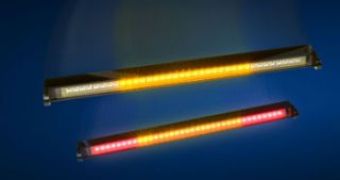The messages sent by brake lights to the driver behind bear a small resemblance to the binary code used by computers. But as we all know, the binary code is hardly the perfect communication language. For example, when you press the brake pedal, the break lights signal to the cars behind your intention to stop, except that no additional information is given, such as whether the car is slowing down or you are executing an emergency brake.
John Hennage, of Virginia Tech College and Engineering, believes that the solution would be the implementation of an intelligent braking system which could make a clear difference between two extremely different situations. "A driver could be tapping his foot in time to music and the brake lights would blink. Or, a driver can rest her foot on the pedal and the lights would glow. It's not enough information for the following driver."
The intelligent brake lights were developed by businessman Meade Gwinn and Virginia Tech Mechanical Engineering Professor Mehdi Ahmadian. With the help of a group of students who were assigned to the problem, Ahmadian created a horizontal LED light bar which glows amber when the car is slowing down and red for an emergency stop.
"The drawbacks are that the light bar would be an additional brake light because the law forbids altering original equipment. But the biggest obstacle is that light bars cost 50 dollars each to produce," said licensing associate with Virginia Tech Intellectual Properties John Telerico.
Thus, in late 2007, Ahmadian and Talerico asked Hennage to create a cheaper version of the LED brake lights, which would complete the same task by modifying the already existing lights. With the help of a decelerator sensor, Hennage successfully created the new LED brake lights which, when slowing down, they light up in a traditional way, albeit when under heavy braking, extra light flash.
"We also have the ability to connect other sensors to the microcontroller, such as from the atutomatic braking system, the automatic traction control, and the collision avoidance system. If any of these systems are activated, lights could flash to alert drivers of nearby vehicles," said Hennage.
Although the brake light system is still in the prototype stage, a manufacturer could easily pick up the specifications and implement it into mass production.

 14 DAY TRIAL //
14 DAY TRIAL //